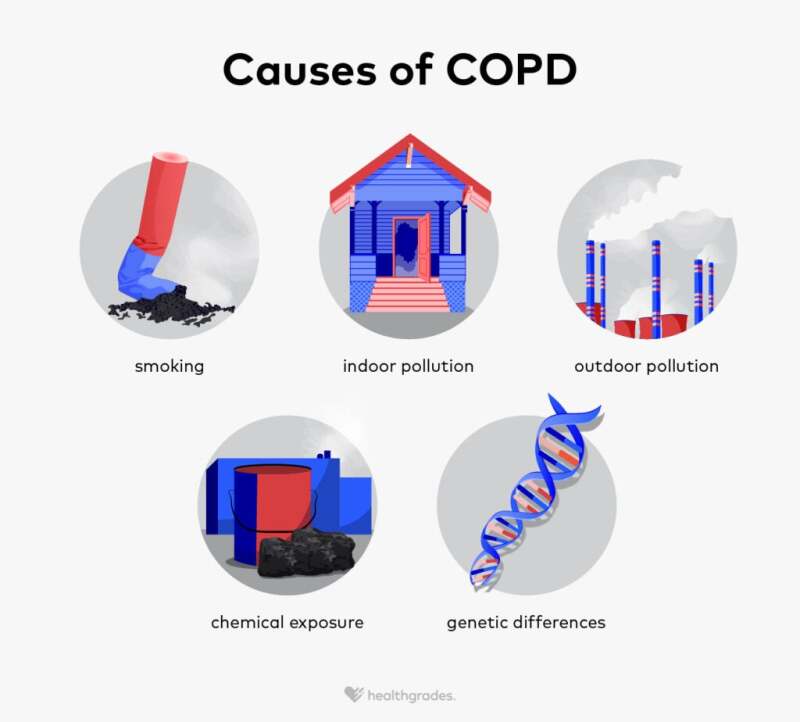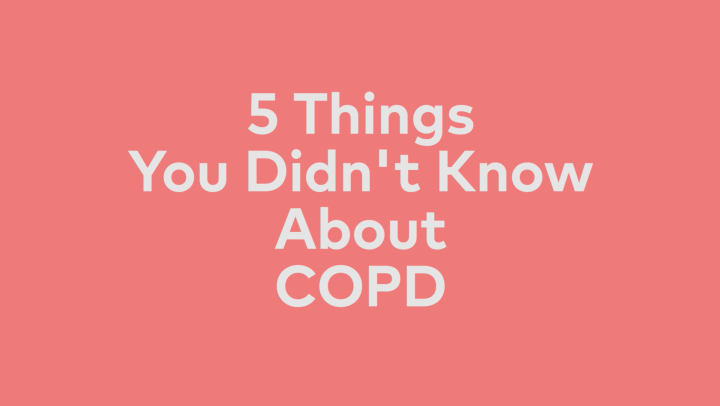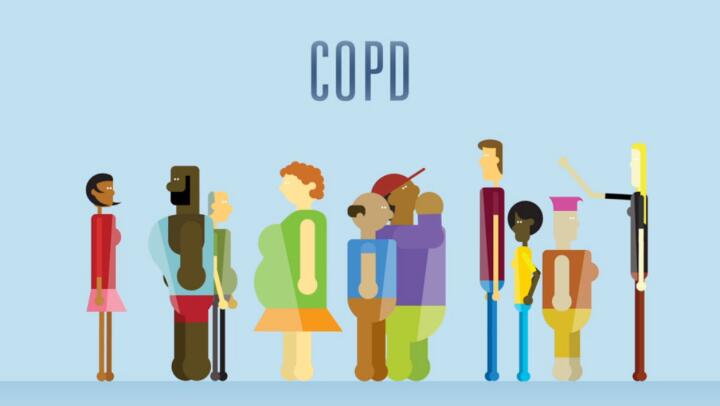In addition to treatments such as medication, knowing possible COPD causes can help you and your doctor address the underlying cause. This can help stop the condition from progressing and improve your outlook.
This article discusses the main causes of COPD, including how it develops and other factors that may cause its development. It also explains additional risk factors and how to reduce the risk of COPD and its complications.
How does COPD develop?

COPD refers to a group of conditions that cause obstruction of the airways and breathing problems. These conditions
Emphysema and chronic bronchitis may develop due to long-term or excessive exposure to a substance that damages the airways. These conditions can occur due to the
- Emphysema: Emphysema is when the air sacs that exchange gasses in the lungs become damaged. This can mean that not enough oxygen reaches the blood. Emphysema may also cause inflammation that reduces the elasticity of the airways, leading to airway collapse.
- Chronic bronchitis: Chronic bronchitis refers to long-term inflammation of the bronchi, the air passages of the lungs. This can obstruct breathing and cause the buildup of mucus, further impairing breathing.
This damage means that the volume of the air you can breathe out decreases. As a result, not enough oxygen may reach the blood. COPD symptoms may then develop, such as shortness of breath or a chronic cough.
Below are the main causes of COPD.
Smoking
COPD is frequently caused by cigarette smoking. In fact, the American Lung Association suggests that smoking may be the biggest risk factor for COPD. Around 85–90% of COPD cases are linked to smoking.
A 2019 study also suggests that
Smoking may also increase the risk of dying from COPD, if you develop it.
Air pollution
Long-term exposure to high levels of polluted air indoors or outdoors may increase your risk of COPD.
Short-term exposure to pollution
However, according to the National Health Service (NHS), the exact relationship between air pollution and COPD is not confirmed. Further research is necessary to understand how air pollution can cause COPD.
Chemical exposure
Some people may work in environments that expose them to certain chemicals, irritants, and other pollutants. This can be a significant risk factor for COPD. However, in some cases, COPD may take a
Substances that may be linked to COPD
- cleaning chemicals and disinfectants
- pesticides, insecticides, and herbicides
- polycyclic aromatic hydrocarbons
- arsenic
- isocyanates, such as diisocyanates, which are found in polyurethane
- heavy metals, such as:
- lead
- cadmium
- chromium
Substances linked to COPD can also include particles from these materials, such as:
- smoke and fumes
- dust from:
- grain and flour
- silica
- coal
However, chemical exposure that affects lung health
- using high levels of cleaning chemicals regularly in the home
- using other substances without protection or ventilation
Other risk factors of COPD
Some factors may increase your risk of developing COPD. These can include:
- exposure to secondhand smoke
- a history of respiratory infections in childhood
- having asthma, especially during childhood
- socioeconomic disparities
- being over the age of 60
- genetic differences
It’s important to note that these are risk factors and not causes. This means they can increase your chance of developing COPD, but not everyone with these risk factors will develop the condition.
Additional factors may also worsen COPD symptoms for some people who already have the condition. These can include:
- respiratory infections
- extreme or irritating weather, such as
cold weather Trusted Source PubMed Central Highly respected database from the National Institutes of Health Go to source - allergens, such as dust and pollen
- indoor and outdoor air pollution
- smoke, such as tobacco smoke and wood smoke
Genetics
According to the NHS, around 1 in 100 people with COPD have an inherited genetic tendency for the condition. This is referred to as alpha-1-antitrypsin deficiency (AATD). As a result, COPD may run in families.
Alpha-1-antitrypsin is a substance that can protect the functional tissues of the lungs from becoming damaged.
If you have AATD, the lungs can be more susceptible to damage. This means that while AATD alone doesn’t cause COPD, it can increase your risk of developing it from other causes. For example, people with AATD may develop COPD sooner than people without it, especially if they smoke.
Reducing risk
Not all cases of COPD can be prevented with lifestyle approaches. This may be especially true if you’ve already been exposed to a known cause of the condition.
However, you may be able to reduce your risk of developing COPD or prevent current symptoms from worsening by:
- quitting smoking if you already smoke
- avoiding secondhand smoke
- encouraging your workplace to improve ventilation and air pollution
- checking air pollution levels before spending extended time outside
- keeping your house free of dust
- getting regular check-ups if you have high exposure to COPD-related substances, such as smoke
- contacting your doctor for advice about your risk and exposure
- getting
flu shots Trusted Source PubMed Central Highly respected database from the National Institutes of Health Go to source every year - wearing a National Institute for Occupational Safety & Health (NIOSH)-approved
respirator mask Trusted Source Centers for Disease Control and Prevention (CDC) Governmental authority Go to source when working with chemicals
Early and effective treatment can also help improve symptoms and reduce the risk of further complications. Treatment can depend on the underlying cause and your specific symptoms, but may include:
- using an inhaler with medications, such as:
- bronchodilators
- corticosteroids
- glucocorticoids
- phosphodiesterase-4 inhibitors
- antibiotics for secondary bacterial infections
- oxygen therapy as part of hospital treatment
- positive airways pressure (PAP) therapy, which uses a mask connected to a machine to help you breathe
- surgery, such as surgery to reduce lung volume or lung transplantation
- exercise training and physical therapy to help rehabilitate the lungs
Summary
COPD refers to two conditions that lead to obstructed breathing, known as emphysema and chronic bronchitis. This obstructed breathing can occur due to inflammation that develops as a response to certain irritants or substances.
COPD causes can include smoking and exposure to air pollution and chemicals. Smoking may be the principal cause of COPD. A genetic deficiency known as AATD can also increase the risk of COPD.
Not all cases of COPD are preventable. However, approaches such as quitting smoking may help reduce your risk.
Contact your doctor if you have concerns about your lung health or risk of COPD.















